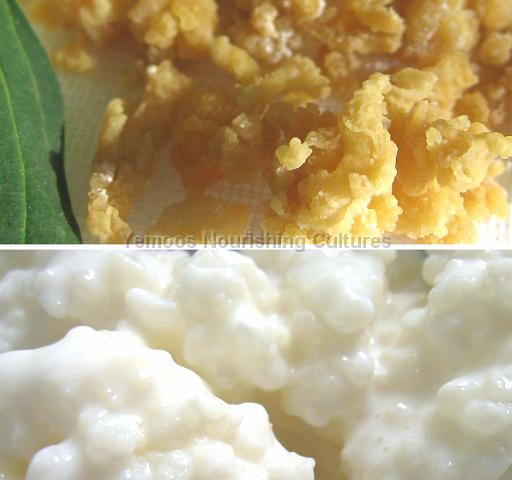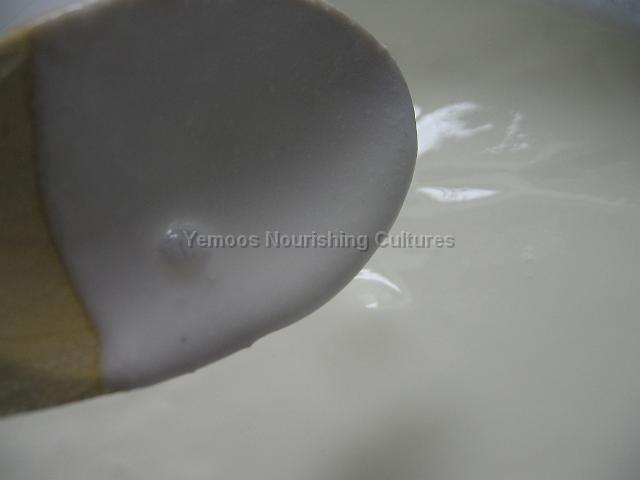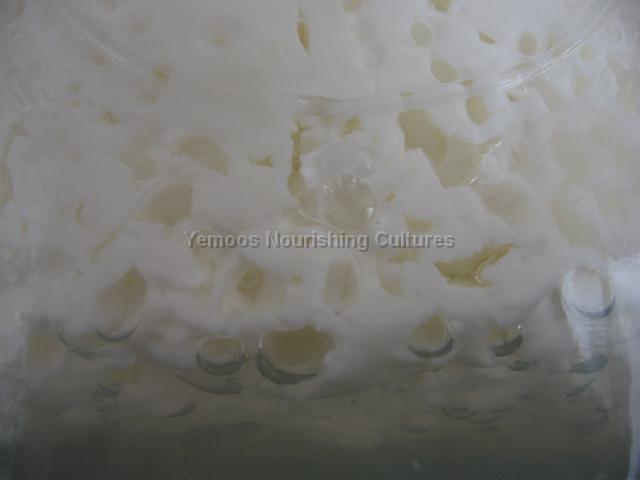Milk Kefir Pictures
Sometimes the best way to learn about something (save doing it yourself!) is to see it!
In our picture sets you can expect to find the following (more pictures coming soon!):
• Research Findings (any experiments we've documented w/ our camera)
• Descriptive Pics (measurements, size, colors, etc)
• Fun Pics (artsy stuff and crazy looking cultures!)
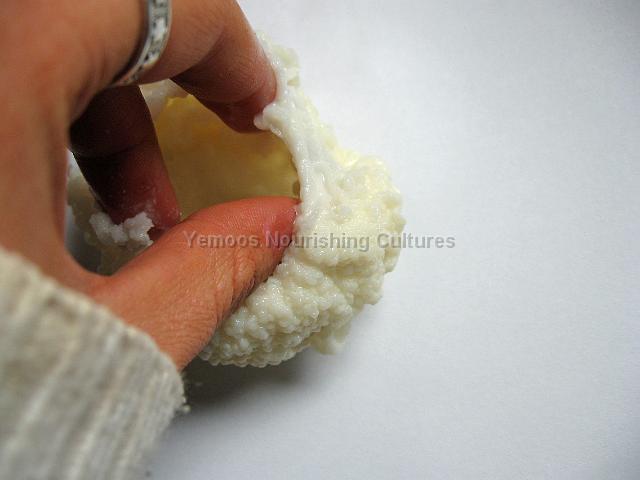
One of our largest grains (that we called 'The Beanie'), from the back side - you can see the peculiar way this grain grew into a hollow balloon shape.

These pictures were taken 25 days apart - allowing 'The Beanie' (one of our largest grains) to grow another inch and acquire a little 'tag' hanging off it, too.

The Beanie' in my hand - measuring about 3 inches at this point.

'The Beanie' which grew to about 4 inches before we finally separated it. Large grains are very inefficient compared to small numerous grains, and will not produce as superior of a kefir as smaller grains.
The difference between live and dried grains - a dramatic color change takes place, from fresh and white to dried and golden. They decrease to be 1/3 -1/2 of their original size.

Some lumpy ribbons. When stressed or overcrowded the ribbons will progress to be even more flat and smooth - just like a true ribbon (they will loose their lumpy, coral appearance completely). Given more space and milk, and gentler handling, they will resume a more coiled lumpy shape again.

Milk grains can be many sizes and shapes, even within the same batch. Here you can see 3 different sizes taken from the same batch. The largest is about 1/2 an inch (1.3 cm). These are nice and coiled and round - kefir regularly goes through changes though and may loosen and be more limp in shape once in awhile.

Here you can see kefir that is progressing too quickly (too many grains, not enough milk). It is already over-done at 12 hours, and completely seperated into pure curds and whey at 24 hours.
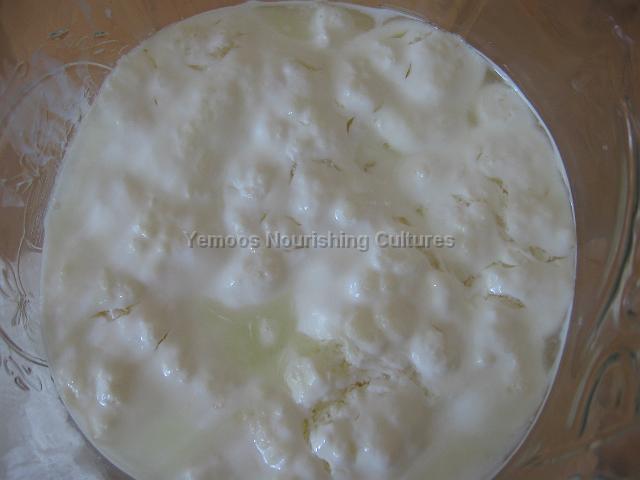
Kefir is thin, like buttermilk. It is not as thick as yogurt. You can see it is thicker than pure milk though by the way it clings to this spoon, and the trapped air bubble.
Kefir seperating into whey - and air (carbon-dioxide) getting trapped during the fermentation process.
An excellent example of just when kefir is done and ready to be consumed - you can see the bottom just barely starting to lift, with the beginning of the seperation of the kefir into whey. When you see this pocket on the bottom, your kefir is ready to strain. You can strain before this point too if desired.

Learn More About Milk Kefir:
- Milk Kefir Overview
- Milk Kefir FAQ
- How to Make Milk Kefir (Step-by-Step Instructions)
- The History of Milk Kefir Grains
- Milk Kefir Nutritional Profile
- Strains: Bacteria and Yeast Strains in Milk Kefir
- The Difference Between Commercial Kefir and Homemade Kefir
- Meet our Milk kefir Grains
- Milk Kefir Flavorings and Recipes
- Instructions on How to Make Coconut Milk Kefir
- Milk Kefir Videos
- Puchase Milk Kefir Grains


